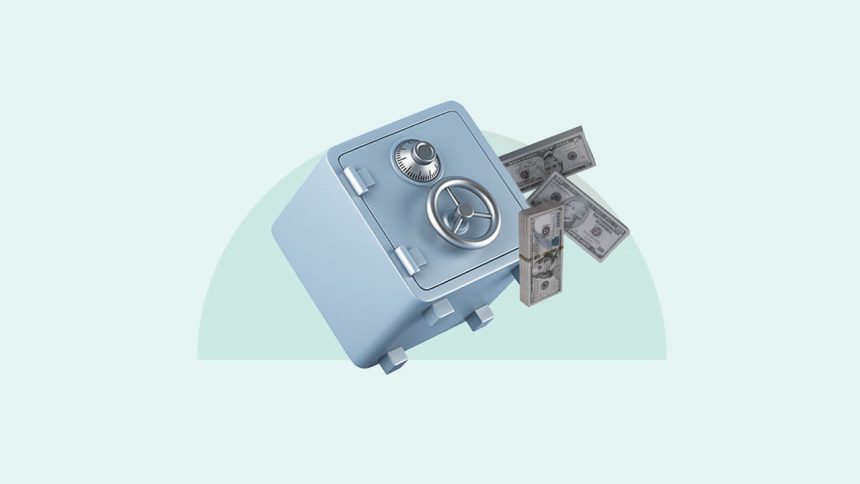This article does not represent the financial advice of Barclays. Individuals should consider their situation carefully before making financial decisions.
Not all savings accounts are created equal — especially if you’re dealing with larger amounts. If you have $25,000 or more in your savings account, it’s time to think more strategically about where you park your money.
Don’t settle for a basic savings account. With the right account, such as the Barclays Tiered Savings account, your money can work harder, grow faster and set you up for financial security and growth.
Have a plan for your money
Before deciding where to put your money, define your financial goals. Are you building a retirement fund, saving for a major purchase or preparing to invest? Your answer will shape the best strategy for maximizing your savings.
A well-structured plan helps you balance security and growth. Keeping too much in a low-yield savings account means missing out on potential returns while investing too aggressively can leave you without a safety net when unexpected expenses arise. By clearly defining your short and long-term financial objectives, you can allocate your funds more effectively and ensure every dollar works in your favor.
Bankrate Insight: How much money should you keep in a savings account?
How much money should you keep in a savings account?
Most financial experts recommend keeping three to six months‘ worth of expenses in an easily accessible savings account. If you’re saving more than that, make sure you’re getting the most interest in your account and diversifying across different accounts or financial products to help your money grow faster. An account like the Barclays Tiered Savings Account can help you maximize your interest rate.
Most financial experts recommend keeping three to six months‘ worth of expenses in an easily accessible savings account. If you’re saving more than that, make sure you’re getting the most interest in your account and diversifying across different accounts or financial products to help your money grow faster. An account like the Barclays Tiered Savings Account can help you maximize your interest rate.
Use the right bank account
Where you keep your money matters. A high balance in the wrong account can mean missing out on significant earnings or even losing money to fees. If you already have $25,000 or more in savings, you need an account that works for you — not against you.
High interest rates, minimal fees, and strong security features should be top priorities. The right savings account doesn’t just hold your money. It helps it grow, protects it, and gives you the flexibility to manage it effectively.
Interest rates
The higher your savings balance, the more important interest rates become. Even a small difference in rates can significantly impact your earnings over time.
For example, if you deposit $25,000 into a savings account with the national average rate of 0.61 annual percentage yield (APY), you’d earn about $152 in interest over the course of a year. But if you place that same deposit in a high-yield savings account offering 4.5 percent APY, your earnings jump to around $1,125. That’s more than seven times as much.
With larger balances, the gap between low- and high-interest accounts becomes even more pronounced. Choosing a savings account with a competitive rate ensures your money isn’t just sitting idle, it’s actively working to build your financial future.
Fees and other costs
If you’re not careful, fees can quietly eat away at your earnings. Some banks charge monthly maintenance fees, transaction fees, or penalties for exceeding withdrawal limits. While fees may seem small, they can add up quickly and cut into the interest you accumulate.
The best savings accounts for larger balances minimize or eliminate unnecessary fees, allowing you to keep more of your money working for you. Be sure to carefully review any associated fees and choose an account that keeps costs low and your balance growing.
FDIC insurance
With larger savings, it’s important not to “set and forget” your accounts. FDIC insurance only covers up to $250,000 per depositor, per bank, per account type. While this may seem like a comfortable buffer when starting with $25,000, your balance can exceed this limit as your savings grow.
To protect your funds, regularly monitor your accounts. As you approach insurance limits, consider spreading your savings across different institutions or using other financial products, such as certificates of deposit (CDs). This ensures your money remains secure while you take full advantage of interest accumulation.
Bank features
When you’re managing larger savings, the features a bank offers can make a significant difference. Beyond just the interest rate, look for banks that provide tools and resources to make managing your money easier and more efficient.
Having access to multiple accounts within the same institution allows you to organize your savings into categories. Whether you’re setting aside funds for an emergency, a vacation, or a major purchase, being able to easily segment your savings ensures better control over your financial goals.
Mobile banking apps are also key for convenience. Many banks now offer user-friendly apps that allow you to monitor your accounts, transfer money, and track your progress toward your savings goals in real-time. This can make it easier to stay on top of your financial health.
Additionally, if you’re considering expanding your financial strategy, look for banks that offer other financial products or investment opportunities. These can help you build a comprehensive financial plan that’s in line with your long-term goals.
The Barclays Tiered Savings account
Barclays Tiered Savings accounts are designed to maximize growth potential, offering higher interest rates — up to seven times the national average or more — as your balance increases. This tiered structure directly rewards larger deposits, allowing your savings to earn more with every dollar you add. As your balance grows, so does the interest, helping your money compound faster and more effectively than a typical savings account.
A Barclays Tiered Savings account focuses on rewarding savers who can commit to larger balances. If you’re prioritizing long-term growth, this account helps unlock the full potential of your savings, giving you a clear path toward greater financial security.
The bottom line
When you have $25,000 or more in savings, how you manage that money can make all the difference in the long run. With the right strategies, your savings can grow faster, work harder, and provide you with even greater financial security.
Choosing the right account, keeping an eye on fees, and considering investment options are all crucial in maximizing your savings potential. As your balance grows, look for accounts — like Barclays Tiered Savings — that reward you for saving more. This allows your money to work harder for you, especially as you build your savings.
Being strategic with your savings now can set you up for greater financial freedom in the future. Time and the right account are your allies, so don’t leave your money sitting idle. Instead, make sure it’s in an account that helps it grow faster and further.
Read the full article here














